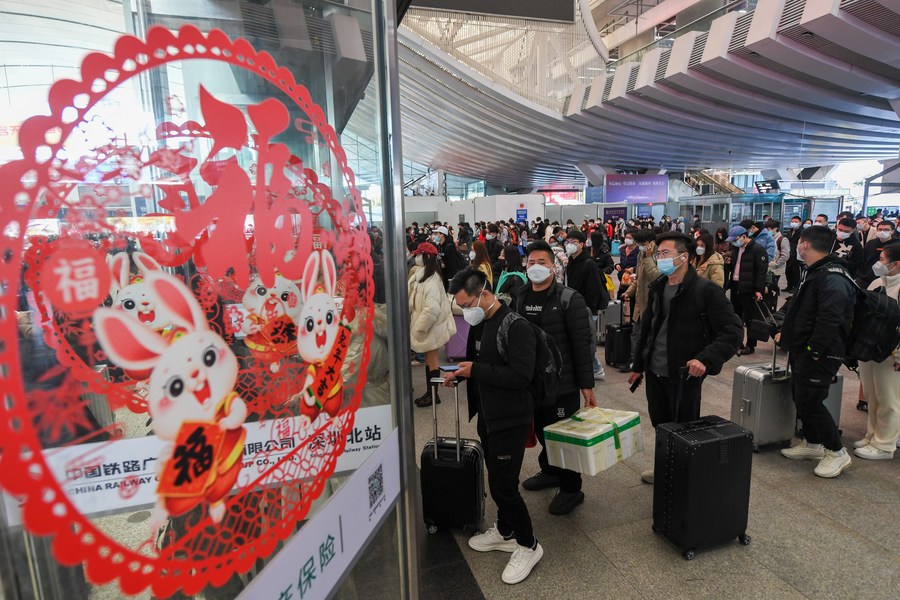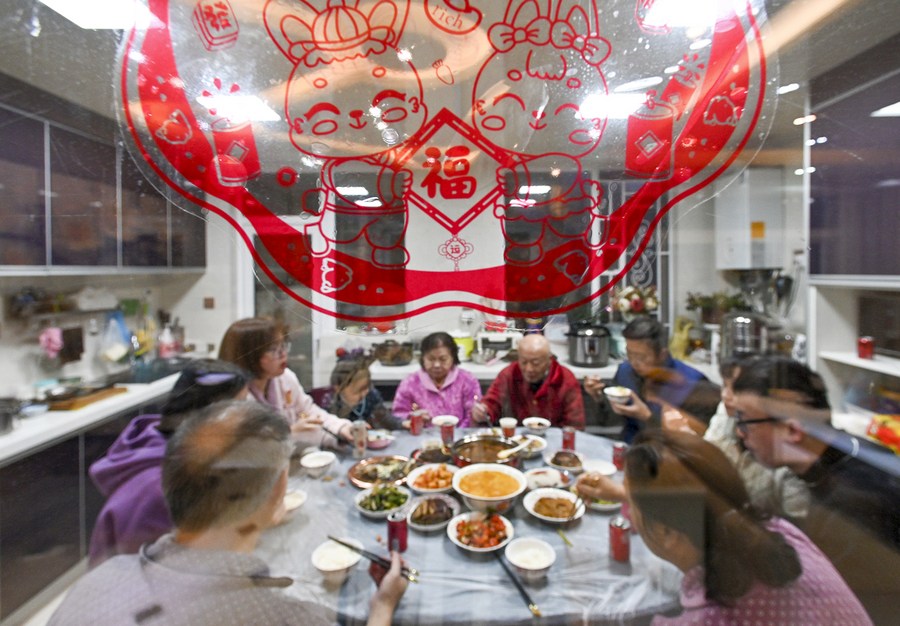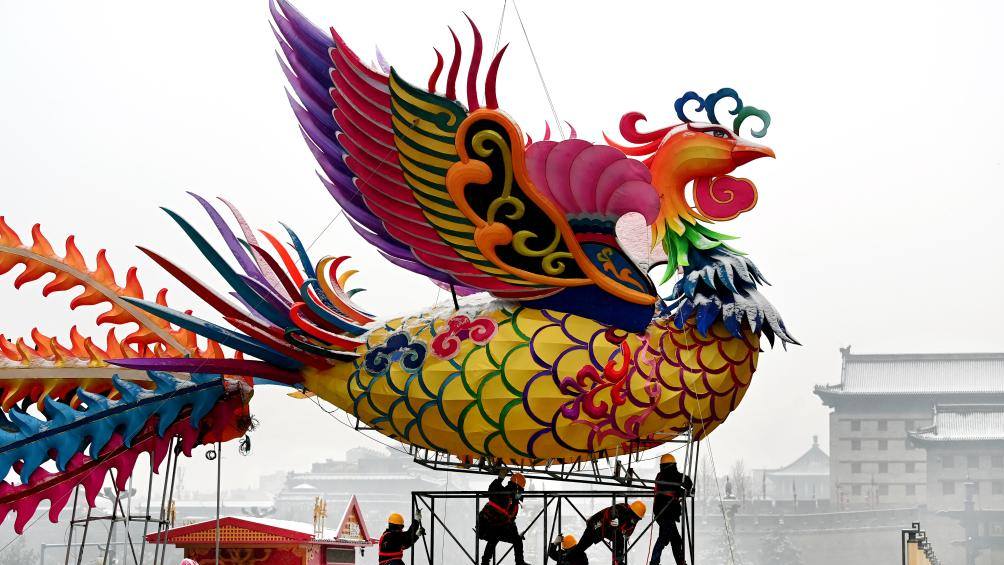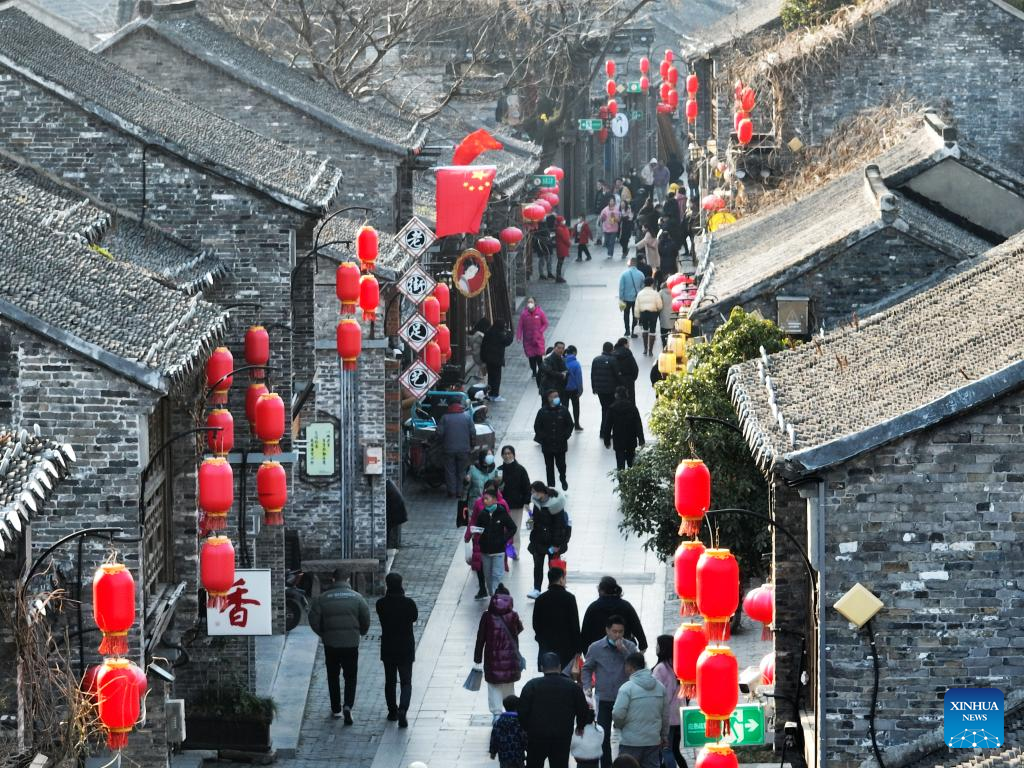
Passengers line up to board trains at Shenzhen North railway station in Shenzhen, south China's Guangdong Province, January 18, 2023. /Xinhua/
Passengers line up to board trains at Shenzhen North railway station in Shenzhen, south China's Guangdong Province, January 18, 2023. /Xinhua/
China's seven-day Spring Festival holiday came to an end on Friday, more than 225 million trips were taken during the holiday between January 21 and 27, according to a State Council working group.
On the first day of work after the festival, national railways are expected to send 12 million passengers, and 10,689 passenger trains are planned to be operated, according to the data released by the State Council working group.
During the Spring Festival holiday, the passenger flow of railways continued to recover. From January 21 to 27, the national railways sent 50.174 million passengers, with an average of 7.168 million passengers per day, an increase of 57.0 percent year on year, and recovered to 83.1 percent of 2019.
Among them, the return passenger flow peaked on January 26 and 27 with over 10 million visitors for two consecutive days.
During the seven-day holiday, the national railways, highways, waterways and civil aviation sent a total of 50.92 million passengers, a year-on-year increase of 83.1 percent. The total flow of highways nationwide was 62.592 million vehicles, a year-on-year increase of 29.7 percent.

A family gathers to have dinner together on the Chinese Lunar New Year's eve in southwest China's Guizhou Province, January 21, 2023. /Xinhua
A family gathers to have dinner together on the Chinese Lunar New Year's eve in southwest China's Guizhou Province, January 21, 2023. /Xinhua
The Spring Festival travel rush, also known as "chunyun," began on January 7 and will last until February 15 this year, during which many Chinese people travel back home to reunite with their loved ones for the Chinese Lunar New Year, which falls on January 22 this year.
To many Chinese, the most important cultural tradition of the Chinese Lunar New Year, or the Spring Festival, is the family reunion.
Major Chinese cities see strong tourism rebounds
Major cities in China witnessed strong rebounds in tourist arrivals during the Spring Festival holiday as pent-up demand was unleashed after China optimized COVID-19 response measures.
Official data revealed by the municipal administration of culture and tourism shows that Shanghai, a financial hub in eastern China, received over 10 million visits during the seven-day holiday, with tourism revenue reaching 16.64 billion yuan (about $2.5 billion). The city's main tourist attractions received over 4.1 million visits, about 90 percent of the figure during the Spring Festival holiday in 2019.
Beijing, the capital city, welcomed over 7 million tourist arrivals during the same period, generating a tourism income of 7.46 billion yuan, up 6.2 percent and 57.6 percent from the previous year. Each tourist spent an average of 1,047 yuan in Beijing, up 48.4 percent year on year and 4 percent higher than the reading in 2019.

Workers set up a lantern installation in celebration of the Chinese Lunar New Year in Xi'an, northwest China's Shaanxi Province, January 23, 2022. /Xinhua
Workers set up a lantern installation in celebration of the Chinese Lunar New Year in Xi'an, northwest China's Shaanxi Province, January 23, 2022. /Xinhua
Other major tourist cities, including Xi'an, northwest China's Shaanxi Province, Sanya, south China's Hainan Province, Harbin, northeast China's Heilongjiang Province and southwest China's Chongqing, all logged a robust recovery over the Spring Festival holiday, with tourists thronging to popular tourist destinations and restaurants.
In addition to iconic tourist attractions, short-tour rural trips in the suburban areas also saw a big bounce in tourism.
Beijing's rural areas received over 1.34 million visits, an increase of 54.4 percent year on year and a growth of 22 percent over 2019. Total operating income from these trips was 162.9 million yuan, up 18 percent year on year and 51 percent over the level in 2019.
"I was thinking of a different way to celebrate the Chinese New Year, so I came here with my family, climbing the Mutianyu Great Wall and experiencing traditional customs such as paper-cutting and lion dance. The hustle and bustle of country life takes me back to my childhood," said a tourist surnamed Wang.

An aerial photo shows tourists visiting Dongguan Street decorated with red lanterns in Yangzhou City, east China's Jiangsu Province, January 18, 2023 /Xinhua
An aerial photo shows tourists visiting Dongguan Street decorated with red lanterns in Yangzhou City, east China's Jiangsu Province, January 18, 2023 /Xinhua
First holiday after COVID-19 response change
This year's Spring Festival is the first in three years not to encourage Chinese people to stay put during the festival to prevent large-scale outbreaks.
The demand for travel surges after China's recent downgrading of COVID-19 management from Class A to Class B. Under Class B management, travelers no longer need to present health codes and negative nucleic acid test results or undergo temperature checks when entering railway stations and airports.
In response, local governments and industries are rolling out festive activities, lively bazaars, and shopping coupons, in all-out efforts to buoy the long-awaited recovery from the COVID-19 doldrums. Tourists, either bathing in the sunshine on the coastline or braving the winter cold in ski resorts, have been inundated with a whirlwind of customized activities.
Data from the country's Ministry of Culture and Tourism shows that domestic tourism revenue generated during the week-long holiday totaled 375.8 billion yuan, up 30 percent year on year, it added.
"The data shows that medium and long-distance tours began to lead the holiday tourism economy. Coupled with the consumption power of tourists returning home to visit relatives, the market scale, consumption structure, quality, and economic benefits of tourism during the Spring Festival holiday are comprehensively returning to normal," said Dai Bin, president of the China Tourism Academy.
(With input from Xinhua)